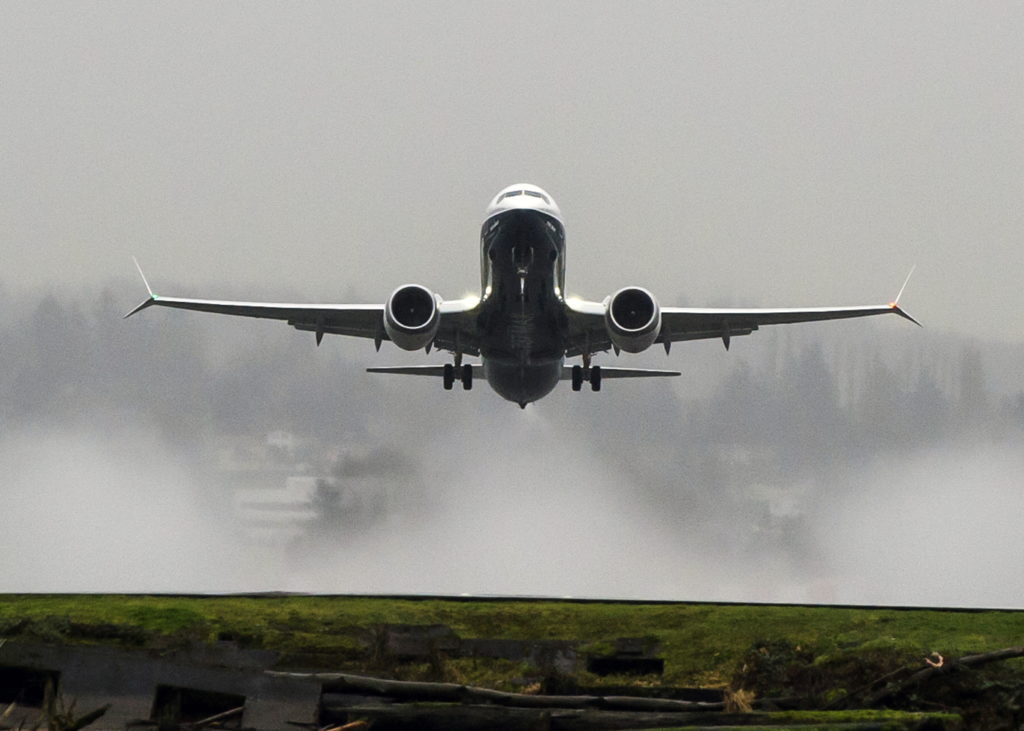Estimated reading time 4 minutes, seconds.
A claim that the Boeing 737 Max remains inherently unstable — despite its problematic MCAS controls software having been rectified — has been dismissed as untrue by a senior Transport Canada official.
Nicholas Robinson, Director General of Civil Aviation at Transport Canada, appeared Feb. 16 before the House of Commons transport committee along with David Turnbull, Director of National Aircraft Certification, to discuss Canadian recertification of the aircraft.

Taylor Bachrach, a New Democratic Party MP from British Columbia, brought up the claim by Brian Barsky, a professor of computer and vision sciences at the University of Berkeley in California.
Among other things, Barsky wrote four weeks earlier in a Globe and Mail article that “the tragic story” began in 2011 when Boeing sought to develop an Airbus A320neo competitor. Because “creating a new modern aircraft requires a design and development process costing billions of dollars and taking many years,” Boeing opted to “short-circuit” the process by “reconfiguring” its existing 737 platform.
“It is the oldest aircraft series still in commercial passenger service, launched in 1965,” he continued. “Back then, Boeing designed an aircraft with a built-in folding stairway to the tarmac and direct access to stowed luggage from the ground. The result was . . . an airframe that sits lower to the ground than other commercial passenger jets.”
Barsky said this meant the 737 Max lacked sufficient ground clearance to accommodate its high-efficiency CFM International LEAP-1B engines. He said Boeing’s answer was to position the larger-diameter, high-bypass turbofans further forward and higher on the wing, which resulted in a tendency to pitch up.
He said regulators did not press Boeing “to modify the aerodynamic design to solve this intrinsic instability.” Barsky called on the U.S. Federal Aviation Administration to allow an independent expert to “objectively” evaluate the aircraft’s safety, and said Transport Canada “should address these critical issues.”
When Bachrach broached what he suggested were design flaws, Transport Canada’s Turnbull said there was “a lot of false information” in what Barsky had written. Turnbull said the 737 Max does not rely on the MCAS for stability; that it simply deals with the pitch-down feel on the aircraft’s controls when a stall may be imminent.
Bachrach countered that Transport Canada had opted to disregard others’ recommendations that MCAS be removed from the 737 Max altogether. Robinson said that although he and Turnbull had initially thought it “a great idea worth exploring,” further examination and consultations eventually led Transport Canada to declare that all MCAS concerns had been addressed through software upgrades and enhanced pilot training.









Installation of the new oversized engines remains a non aerodynamic, non-confirming flaw that destabilizes the aircrafts inherent aerodynamic stability. This means the airframe itself fails the most basic airworthiness design mandates. The fact that the ONLY way to mitigate a catastrophic failure during flight depends upon a guarantee that there is never a software malfunction is absurd. Further, to claim that this inherent critical design fault is mitigated by requiring pilots to stay constantly vigilant to fight the airframes natural instability in order to forestall catastrophe – is utter none sense.
Spewing forth (and approving), a faulty design conceived in desperation to compete for market position is deplorable. Approving it to return to service is simply an example of corporate profits taking precedence over passenger lives.